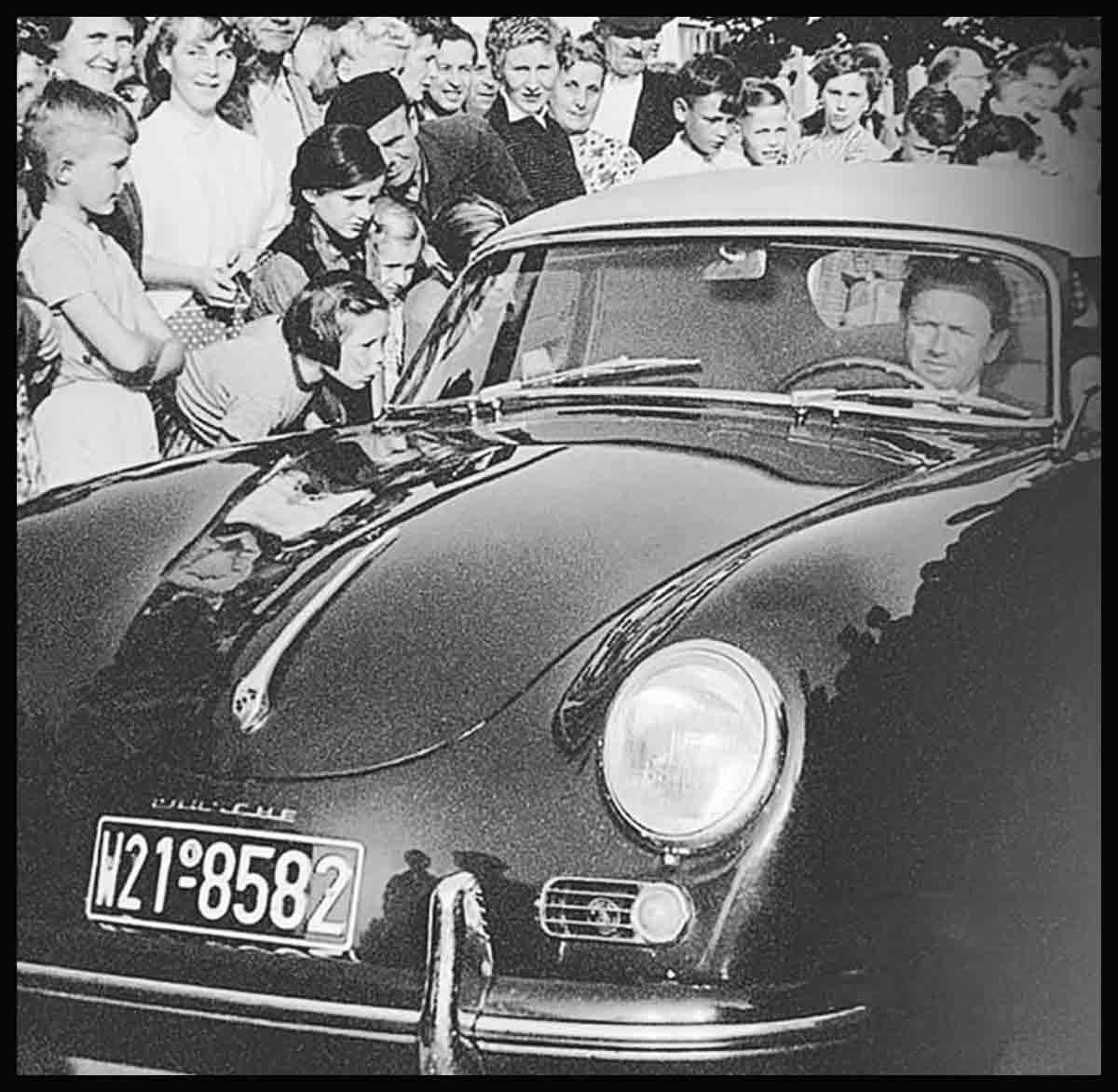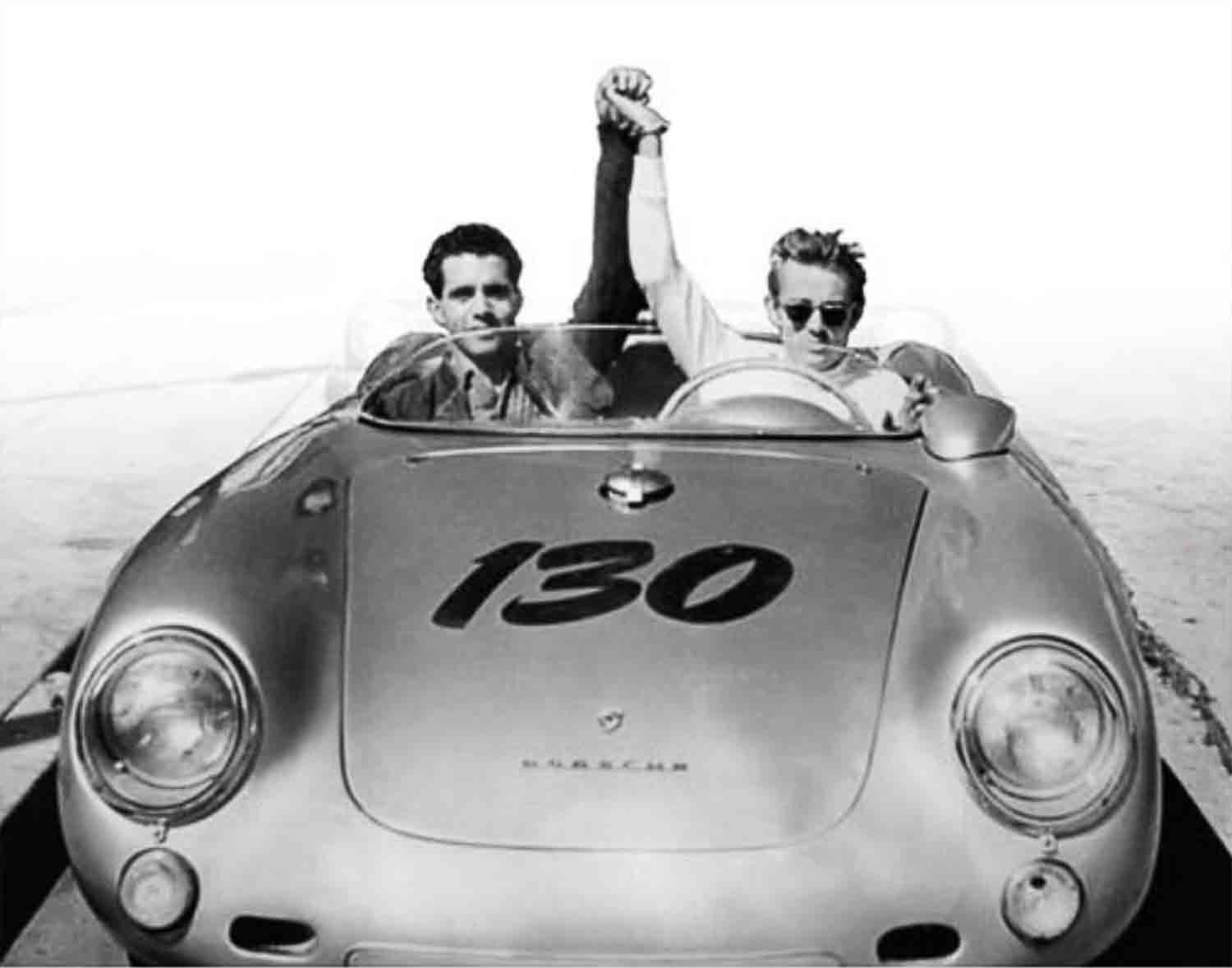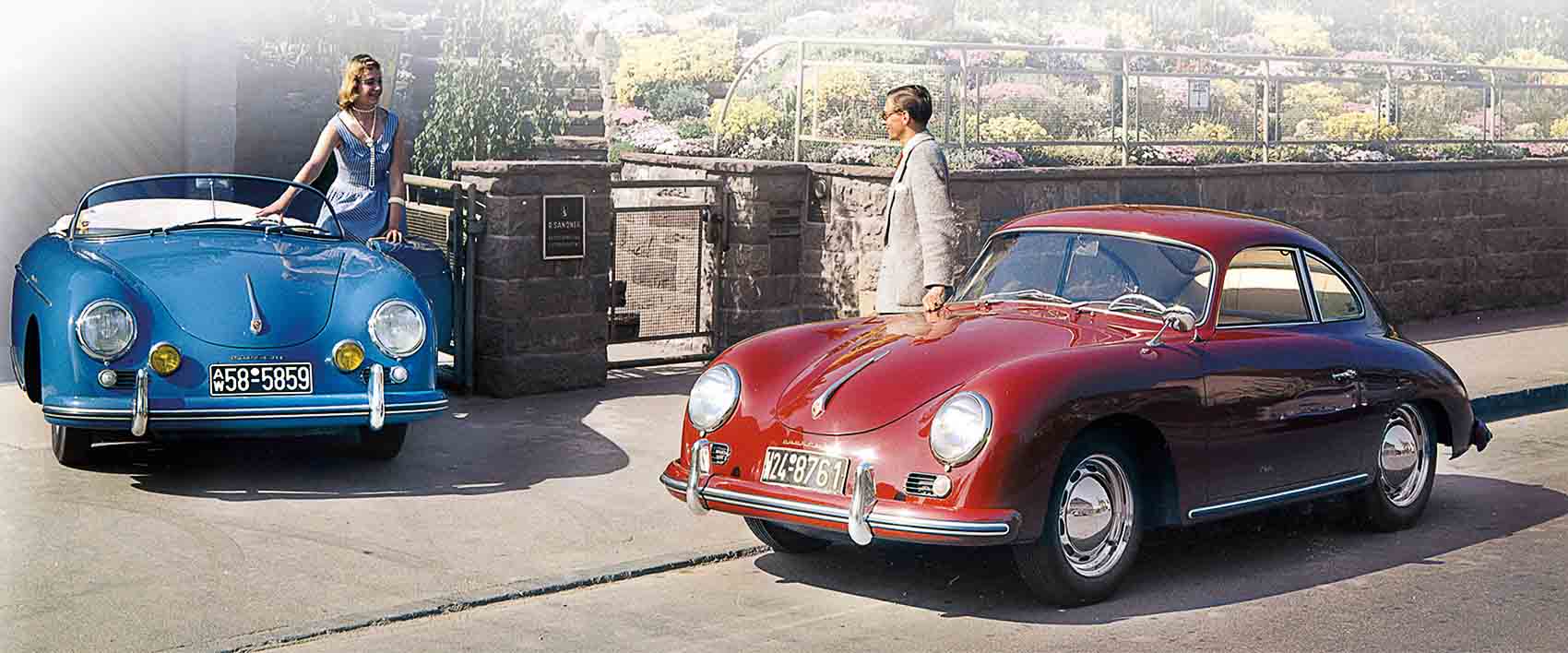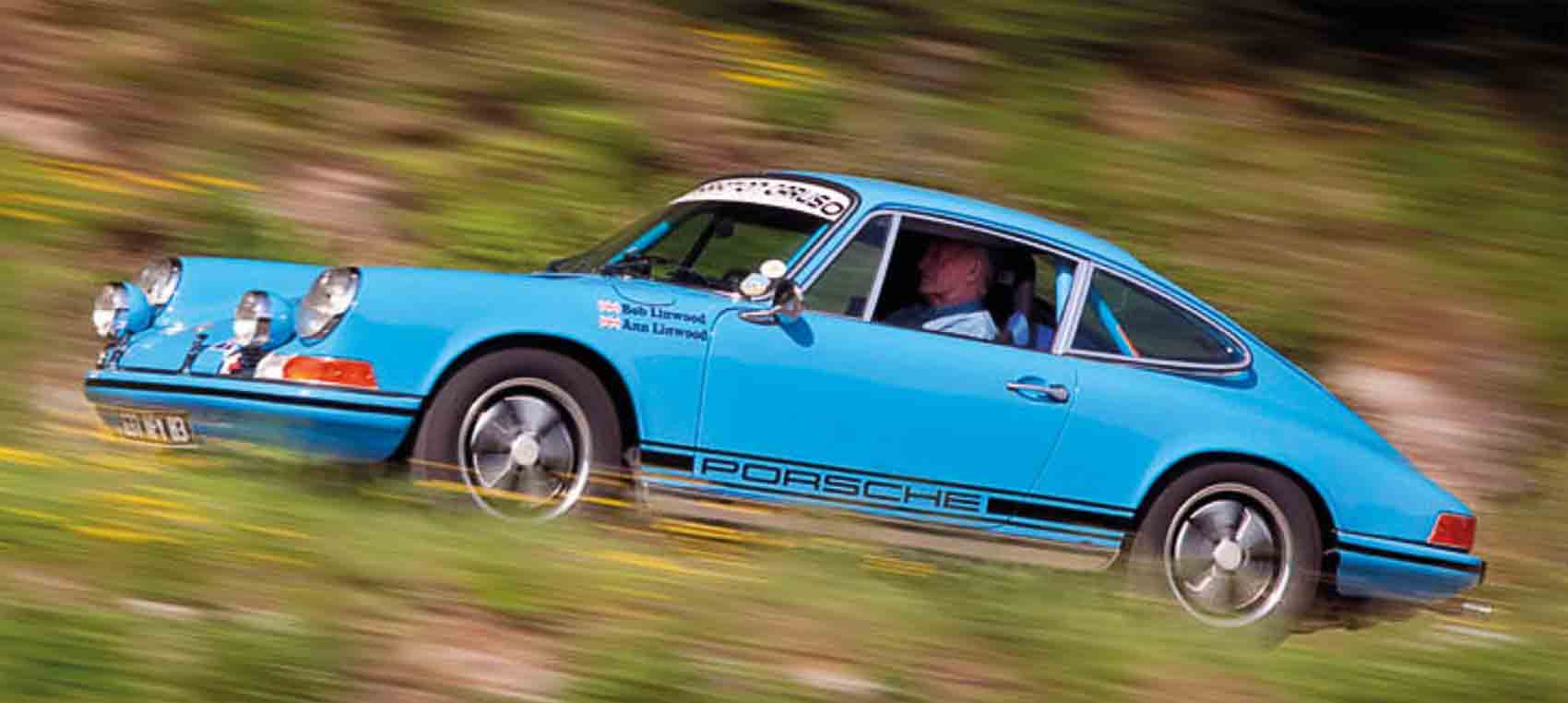
Great Marques—The Porsche Story
A galaxy of legendary road and racing cars has carried the Porsche family name since 1948. There is an unbroken lineage from the earliest 356 to the current 911, spiced with countless race successes, although Porsche’s non-sports car models have proven even more popular with audiences worldwide.
“I couldn’t find the sports car I dreamed of, so I decided to build it myself.”
DR FERDINAND PORSCHE

Actor James Dean (right) with Rolf Wutherich in Dean’s 550 Spyder; the teen heartthrob would die in the car in a crash in California in September 1955.
WHEN IN 1948 Dr Ferdinand Porsche decided to become a car manufacturer in his own right, Austria’s most outstanding automotive engineer already had five decades of car design innovation behind him including four-wheel drive, superchargers, rear-engined Formula 1 cars, and, of course, the Volkswagen Beetle.
Together with his son Ferry, Porsche created a “weekend sports ca”, using the chassis of the Beetle but with a lighter, more aerodynamic body and a mildly tuned Volkswagen, flat-four, air-cooled engine. Out of this humble cocktail, the Porsche 356 was born, and one of the world’s most exciting and innovative sports car names grew.
The company started production of the model in an old sawmill in Gmünd, Austria in 1948, and the first 52 cars were built entirely by hand. The 356 was agile and fun, but also uncommonly reliable and comfortable. Lightweight with nimble-handling, this rear-engined, rear-wheel-drive sports car was available in both hardtop coupe and open configuration.

Seen on the left alongside a 356 Coupé in 1956, the Speedster had a racy, cut-down windscreen, that was immediately distinctive.
The first Porsche 356 was sold in the US in 1950 and, with engine power upped from 40 to 60 bhp, the little rocket quickly established a cult following for its quick responses. Even today, these early Porsches are highly desired by collectors and enthusiasts worldwide.
In 1953 a sports-racing model called the 550 Spyder established Porsche as a major player in motor sport. Starting in more than 370 races around the European and US circuits between 1953 and 1965, the Spyder outshone the more powerful cars in its class. It was easy to handle on both the road and track, and was extremely flexible. But it hit the spotlight in 1955 when film-star James Dean was killed in his 550 in a freak road traffic accident in Cholame, California.

Topping the range of 911s, now all with a longer wheelbase and 2.2-liter engines, was the 180 bhp S model. With lighter handling and increased performance, it had a top speed of 230 mph (370 km/h).
By 1958 the 10,000th Porsche had been built, including the now highly coveted 356 Speedster and the 100 bhp Carrera. But when the 911 replaced the 356 in 1963 a new chapter began for Porsche. The technical centrepiece was Porsche’s all-new flat-six engine, while the sleek, fastback shape (the work of Ferry’s son Butzi) would rapidly turn it into an automotive icon. The Targa version of 1966 offered open-top motoring with aa removable roof panel and a fixed rollover bar. The 1973 Carrera RS, with 2.7-liter engine and lightweight construction, was the ultimate incarnation of the original 911.
The company rekindled its relationship with Volkswagen in 1969 when the partners co-designed the mid-engined 914, giving buyers a choice of VW or Porsche engines. Its replacement in 1975 was the Porsche 924 – the firm’s first front-engined, water-cooled model.
Porsche had originally planned to replace its 911, including the 160 mph (258 km/h) Turbo, with its impressive 928 in 1977, another front-engined model with a brand-new V8 power unit. The 911 was hugely popular, however, and the never-ending demand kept the model in production with near-constant updates.
From 1972 Porsche began offering its engineering research and development skills to outside companies. Its own products also continued to evolve, and in 1982 the 924 became the finessed 944. Faster than its predecessor, the new version included a Porsche-specific engine that could be purchased with or without turbocharging.
In 1990 a radically revamped 911 now offered four-wheel drive—the rear-engined layout, with pronounced rear-weight bias, was a challenge for the uninitiated driver. Three years later, the concept car for a new mid-engined roadster, the Boxster, was unveiled, and a production version joined the range in 1997, shortly after Porsche made its millionth sports car.
An historic era ended in 1998 when the 911’s water-cooled engine ended the air-cooled association that stretched back to Ferdinand Porsche’s Volkswagen. However, that was nothing compared to the company’s radical next move—the introduction of the Cayenne sport-utility vehicle in 2002. Despite its mixed reception, it was admired for its handling. In 2009 the Panamera, a powerful new luxury saloon joined the range. Like the Cayenne, it was created in partnership with VW. Yet, destined to appeal to new customers in China, it veered away from Porsche’s usual offerings.
The open-cockpit Carrera GT, with a 6-liter, V10 engine, arrived in 2003—a 200 mph (322 km/h) supercar bridging the gap between Porsche’s road and race cars. At speeds above 70 mph (113 km/h), the Carrera GT’s automated rear spoiler could be deployed into the air draft to reduce lift by generating stabilizing downforce.
Porsche has become synonymous with sports and race cars alike, winning the Le Mans 24-Hour race more than a dozen times (in 1970 with the 917 and later with the 936 and 962 cars), among some 24,000 other race victories worldwide.
It is a quote. The Classic Car Book – The Definitive Visual History 2016




